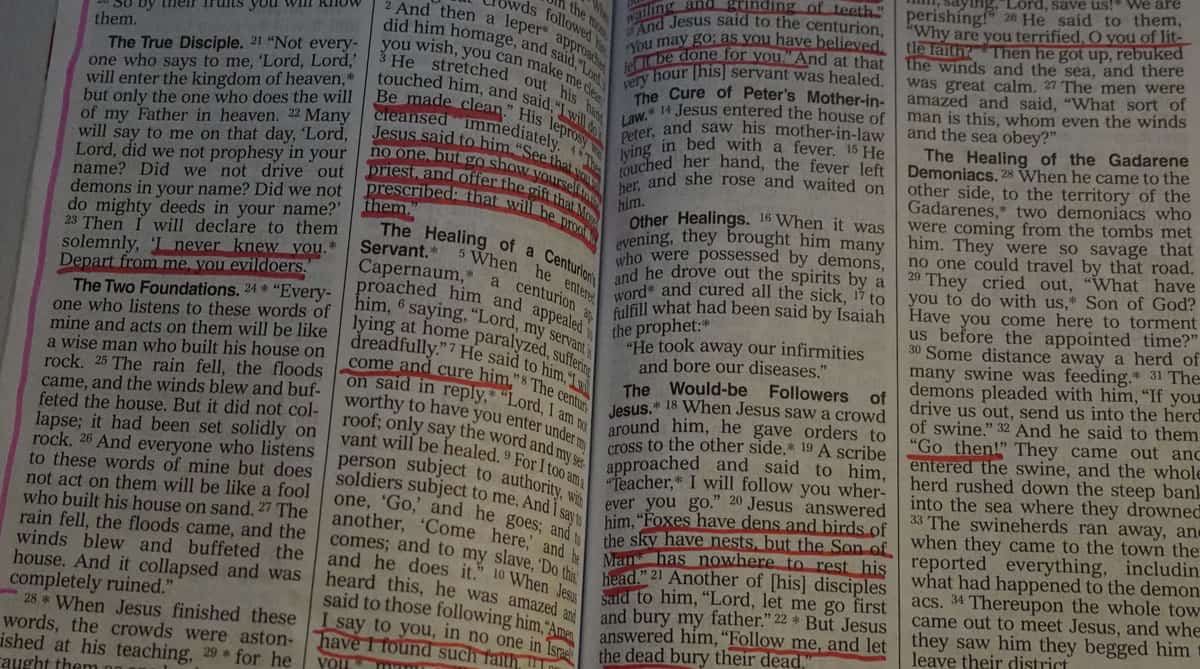Many of us grew up in school, where our books were passed on to the next class after us. Or we borrowed books from the library. We learned we should never write in any book. Bibles today are so inexpensive and readily available that many can afford to have multiple Bibles of their own and contemplate if they can write in them. Let’s start with a quick list of when it would be acceptable or not…
Yes, If it is your own personal Bible
No, if it is a Bible in School that gets passed on to the next class
No, if it is a Bible that you are borrowing from the library.
No, if it is a Bible you are sharing with others (unless they all agree)
No, if it is a family heirloom or historical Bible, passed on to each generation
That sounds like a lot of No’s but for the most part, this question is referring to our own personal Bibles. We’ll use most of our time here to share ideas of how we can write in our Bibles. There is nothing inherently wrong about writing in your Bible. The most important thing is if it helps you grow closer to God.
Remember you can certainly have more than one Bible, so if you are contemplating writing in your family heirloom Bible, passed on to you from your grandmother, I would say go get an inexpensive Bible of your own that you can carry around and mark up however you want. Leave the family heirloom without your colored markings.
If writing in your personal Bible helps you to understand Scripture better and have a better relationship with the Lord, then improving your relationship with Him is the main goal.

When Not to Write in a Bible
If it is not your own personal copy of the Bible then I would never write in it (Period). This would include borrowing a Bible from a library, one that everyone uses in School, your family heirloom, or a historical Bible. Each of these Bibles will likely be passed on to someone else after you so your personal notes, colors, and writings probably will not hold up well over time or appeal to everyone else after you.
If you don’t own the Bible yourself, then definitely don’t write in it.
That may seem like common sense, but let’s be respectful and keep the personal notes and highlights in our own personal Bibles.
Is it a sin to annotate the Bible?
Assuming we are talking about our own personal Bibles, the main question we need to ask is…
‘What is leading me to a closer relationship with the Lord?‘
- If writing in your personal Bible helps you to understand Scripture better and have a better relationship with the Lord, then that is good.
- If your understanding of Scripture and your relationship with the Lord is improving and you don’t want to write in the Bible, that is good too.
- We are not forcing anyone into a single rule here.
What is leading me to a closer relationship with the Lord?
For most people, highlighting in the Bible is for helping to understand the text better. When we first read any book, the written text all looks the same. Once we read it, particular sections may be more important to us or have more meaning than others. (Ex: Some Bibles have Jesus’ words in red). This is to emphasize the importance of some words in the text.
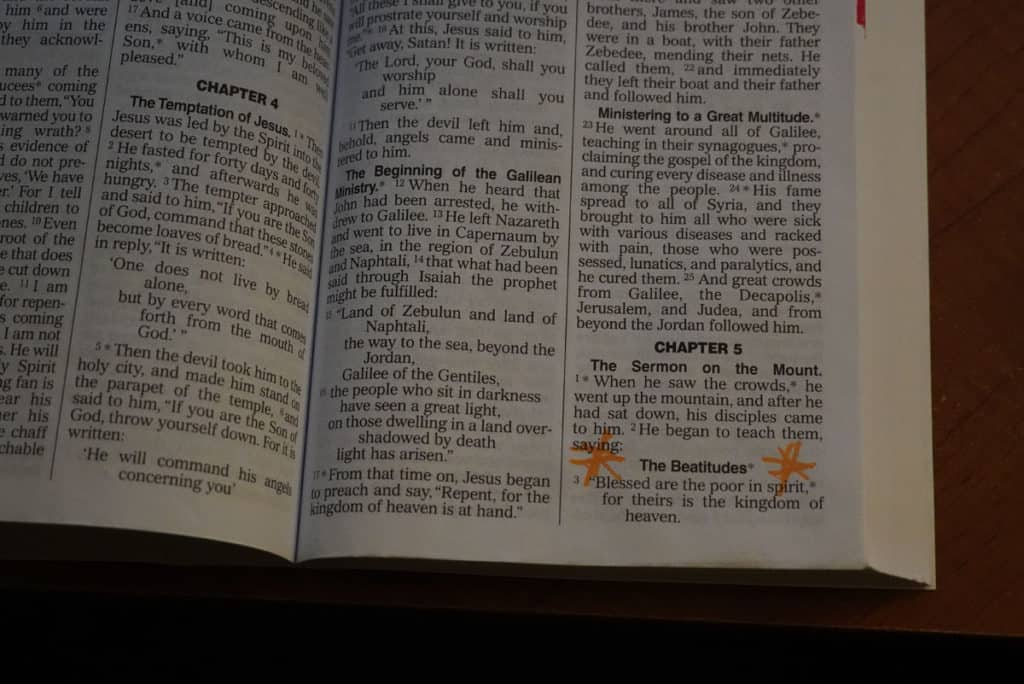
If we color, highlight, or write notes in our Bibles, we are using our senses to help remember certain sections. Some people like to mark sections so that when they come back later, they are not like starting over when all the text looks the same. Other people may want all the text to look the same so the next time they read the Bible they could find a different meaning which they did not see at an earlier time.
If you aren’t sure, you can use two Bibles, one marked and another un-marked. I am honestly in this boat as I don’t want to permanently mark my favorite Bible but can add highlights in my other one. With two, you have the option.
Bible Scholars
I have seen some Bible Scholars where every square inch of their Bibles are colored with highlights and I have seen other Bible Scholars where their Bibles have no personal additions at all, yet in discussions, they both have great value to add in sharing the Good News of the Gospel.
Hope you see my point. If you like one-way or the other, it is a personal decision, not to push it onto others to the point of disunity. There are so many good things we can focus on besides that…
Ignorance of the Bible is Ignorance of Christ.
– St. Jerome
This point from St, Jerome is that we want to be familiar with the Bible as it helps us to be more familiar with Christ.
Ways to Highlight In Your Bible
If you are one of those people who want to write in your Bible as you think it will help you, here are some tips to get started, and then you can add more of your own…
Mark Jesus’s Words
Some Bibles (usually costing a little more) come with Jesus’s words in Red Ink. If your Bible does not have that, you can underline Jesus’s word in red as seen here…
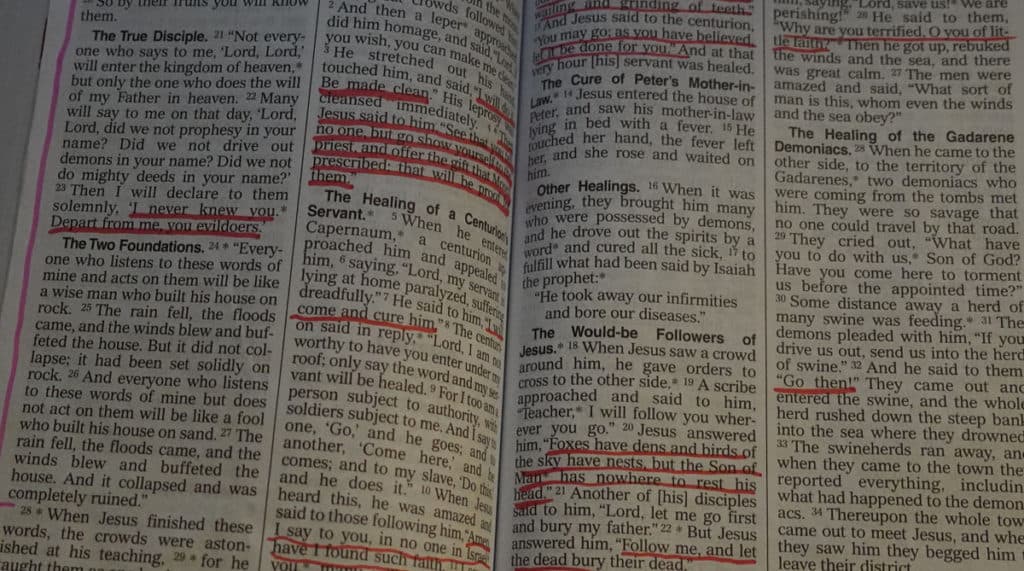
Highlight People
You may want to highlight people. In this passage, I highlighted each new person that I encountered, with Jesus given a special color… this is particularly helpful if you want to learn people’s names or if you are a lector.

Highlight Places
You could do the same when encountering new places. In this case, I placed boxes around Babylon, Jerusalem. Judea, and Bethlehem the first time I encountered them in a passage. This is helpful if you have a map or want to look up the places to get a better geographic context when reading the text. I highly recommend having a bible map as you read, like some here. Some Bibles may have maps in the back like this one.
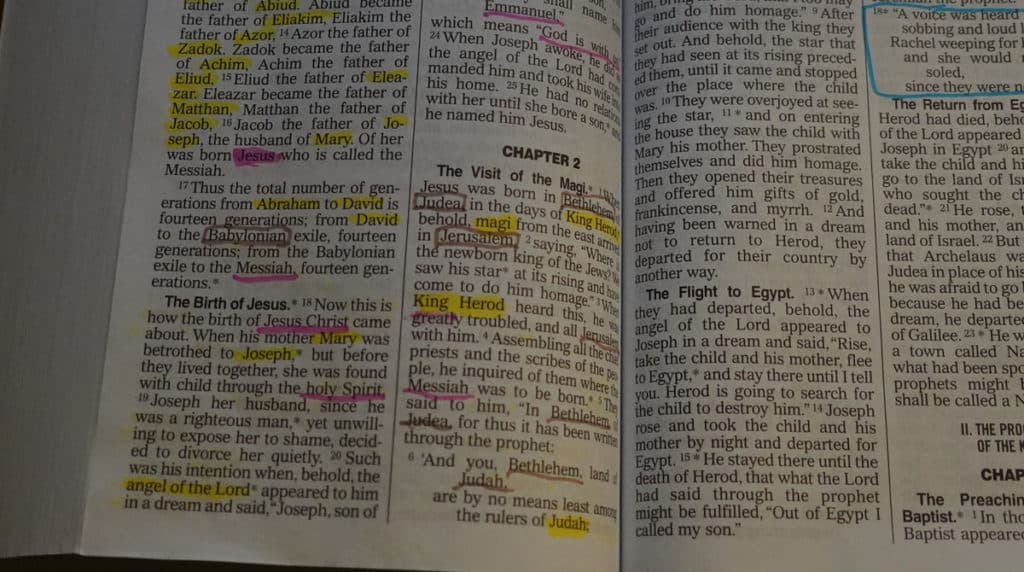
Highlight with Brackets
Sometimes you have a large block of quotes you would like to underline, but underlying them all could use up all your ink and get messy. In that case using square brackets to highlight the entire block is helpful…
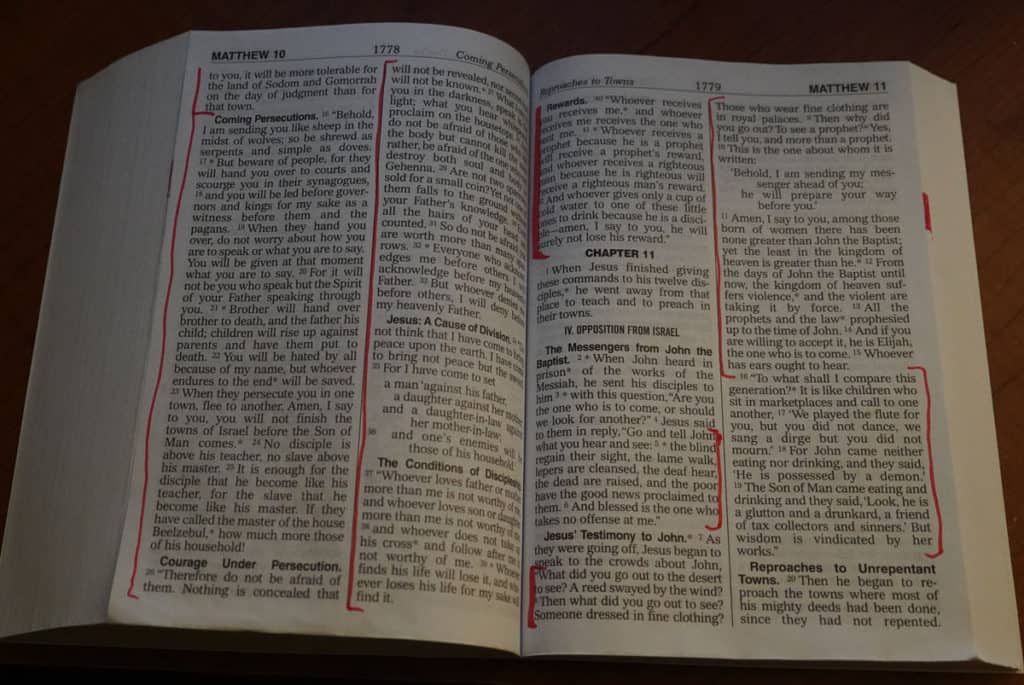
Alternating Dialogue
I started out by highlighting Jesus’ words in red. Often I wanted to easily pick out the person he was speaking with, so I alternated bracket colors as seen here between Jesus and Peter when Jesus asks ‘Who do you say that I am?’ and Peter responds ‘You are the Messiah…”
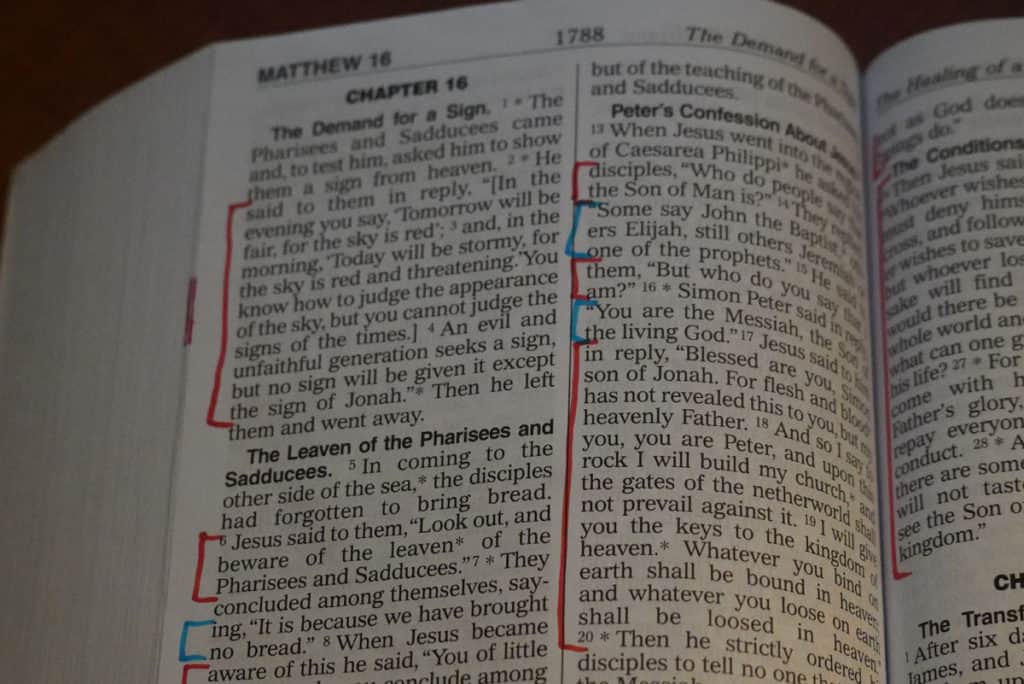
Alternating Boxes
Sometimes you may come across a new situation that you didn’t have marks for before. In this case, I wanted to highlight each Parable so they were easy to distinguish from one another and so I could find the corresponding explanation Jesus gave which may come a bit later. In this case, I decided to use full boxes around the entire parable, alternating color for the next parable.
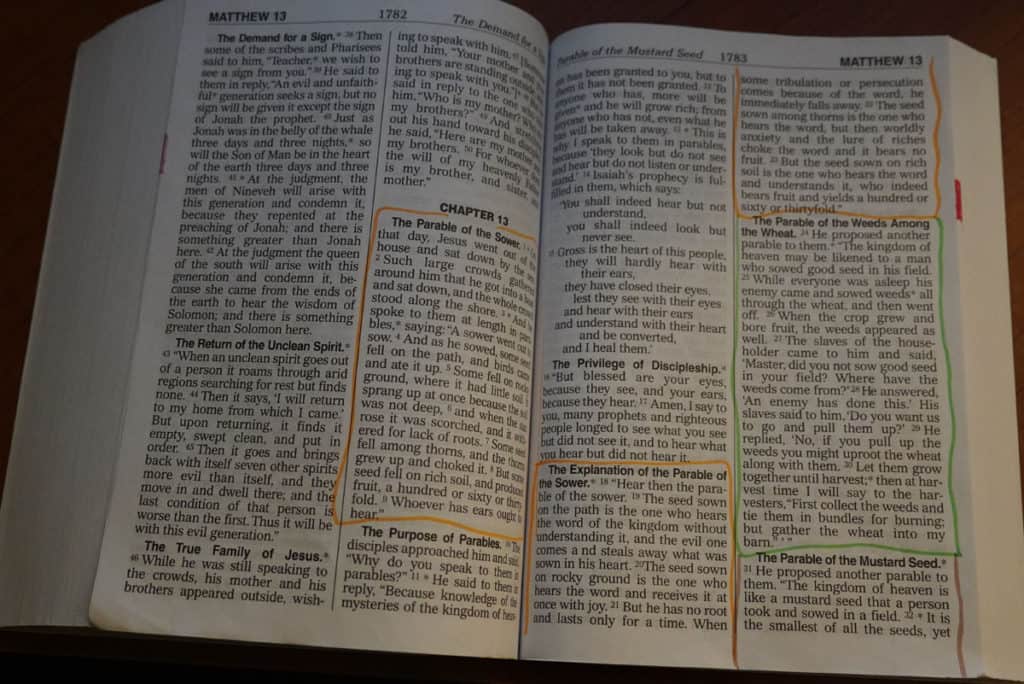
It is still somewhat subtle compared to coloring in the whole passage (which some people do). This decision may depend on what kind of markers you have, how much ink you have, how much time, and how much ink bleeds through to the other side.
Watch for Bleed Through
When you decide to mark your Bible, it can be helpful to test it in some small sections first. Depending on the ink and the type of paper, the amount of bleed-through will vary. In this case, I have 1 actual mark on the page (a small blue box corner mark) but there is a yellow highlight bleeding through the same section and some red bracket marks bleeding through a little further down. It is your judgment call to decide how much bleed-through is acceptable to you. In my case, I may go get some markers that are specially made for highlighting and hope they put down a lighter coat of ink.
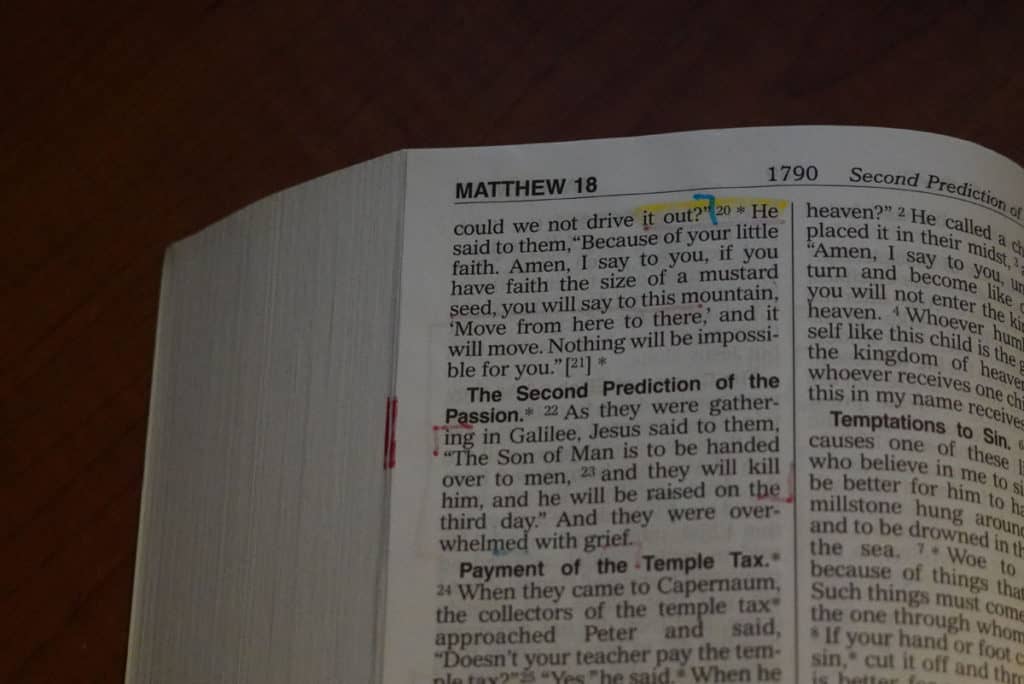
Corner Box Marks
If I am using my Bible at Group Bible Study and I have to get up to read a planned passage or ask someone else to, I will sometimes mark the beginning and end of the passage with small corner marks as a guide to know where to start and stop. I may not be looking to mark-up my Bible permanently with colors, but to help in a certain instance.
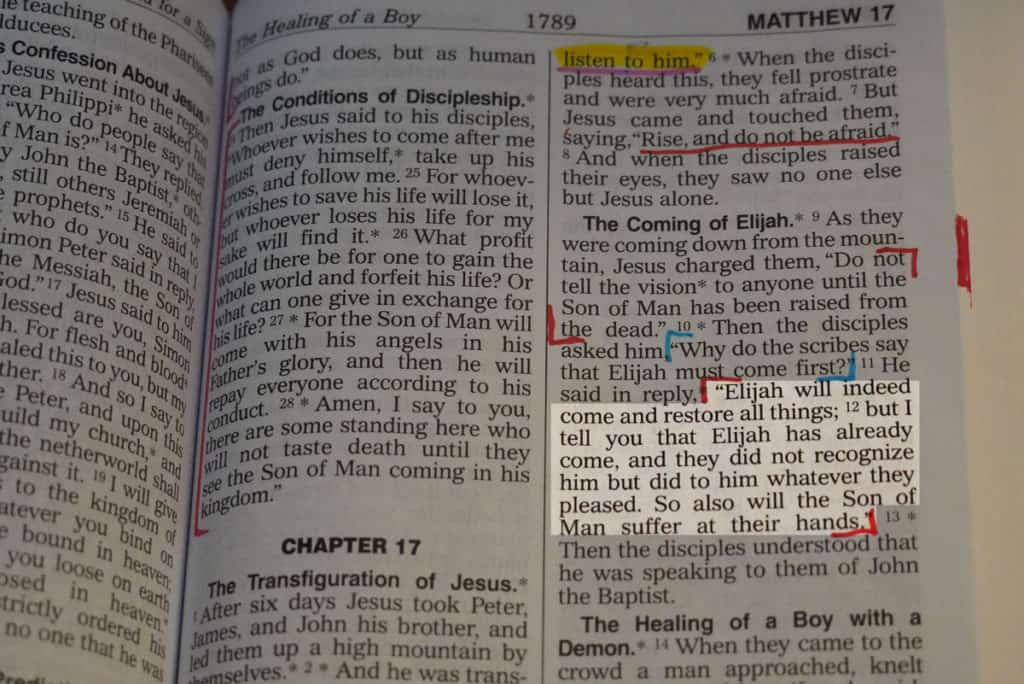
If you are not used to marking your Bible, this is a small way to start. I often prefer this over underlying an entire passage as my lines often end up crooked and going over the text itself. I also may not want a full box around an entire passage if it is for a one-time situation.
Highlight Quotes You Like
Do you have any favorite Bible quotes? As you are reading do you ever come across some words that you don’t want to forget? Pick a color for your favorite quotes. In this case, I liked the whole passage but wanted to make God the Father’s words more noticeable to emphasize Jesus as the Messiah with direct proof from God above…

Highlight and Annotate Key Points You Want to Remember
Sometimes a highlight alone does not help you to remember why you highlighted the text in the first place. Some people use the margins to add a short note to help them remember why or to summarize the quote in a word or two for easy reference later.
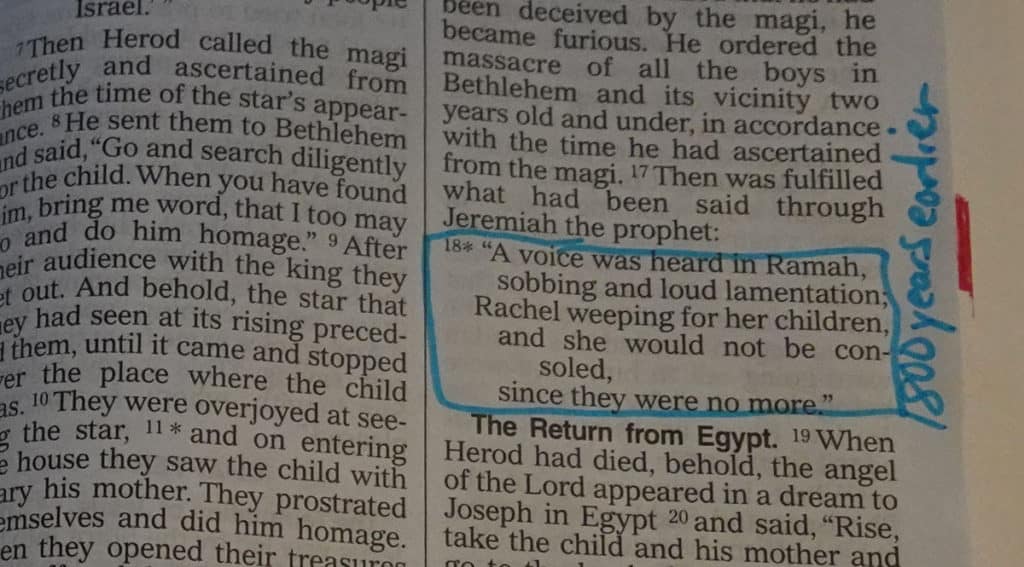
Mark You Own Bible Tabs
You don’t need to go out and buy Bible tabs. With a little practice, you can improve at finding books of the Bible in any Bible without any markings.
If you want to make your own tabs, hold your bible sideways, find the beginning and end of the book and only hold that 1 book between your fingers. Then color in the edge for about a 1/2 inch or a centimeter or two.
That is what I did for the book of Matthew below (small red rectangle on the side of the Bible). Now I have a very quick way to find the New Testament anytime I pick up my Bible.
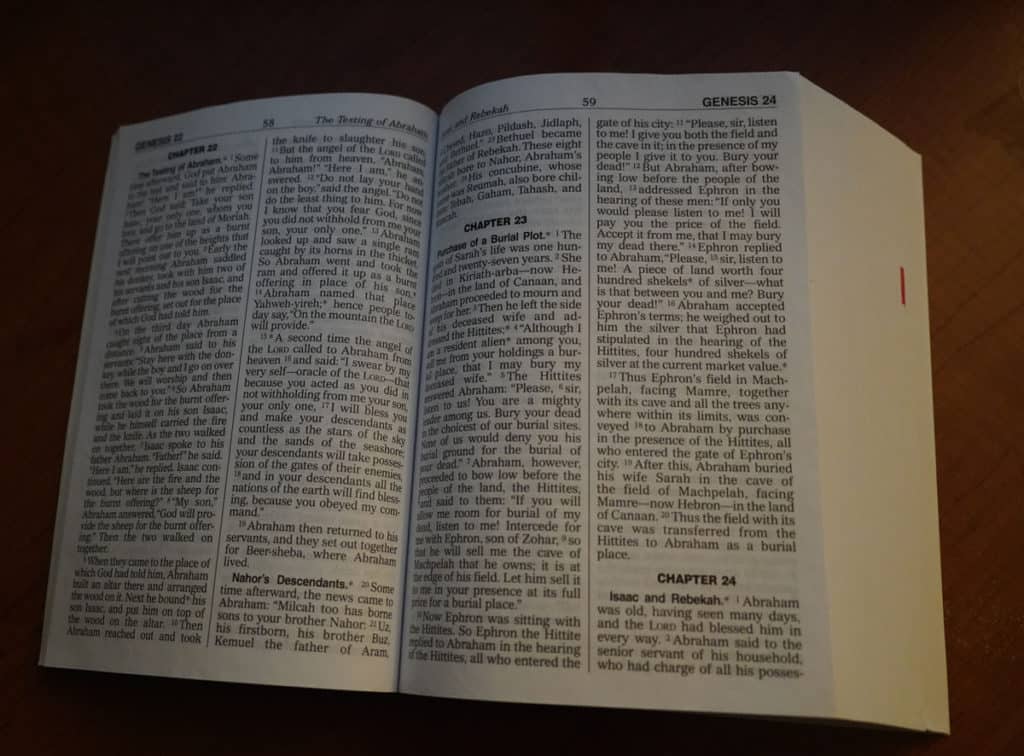
Below I continued to Mark all 4 Gospels in Red.
Then I also marked the Pslams and Proverbs in a different color.
It is up to you how many you want to do.
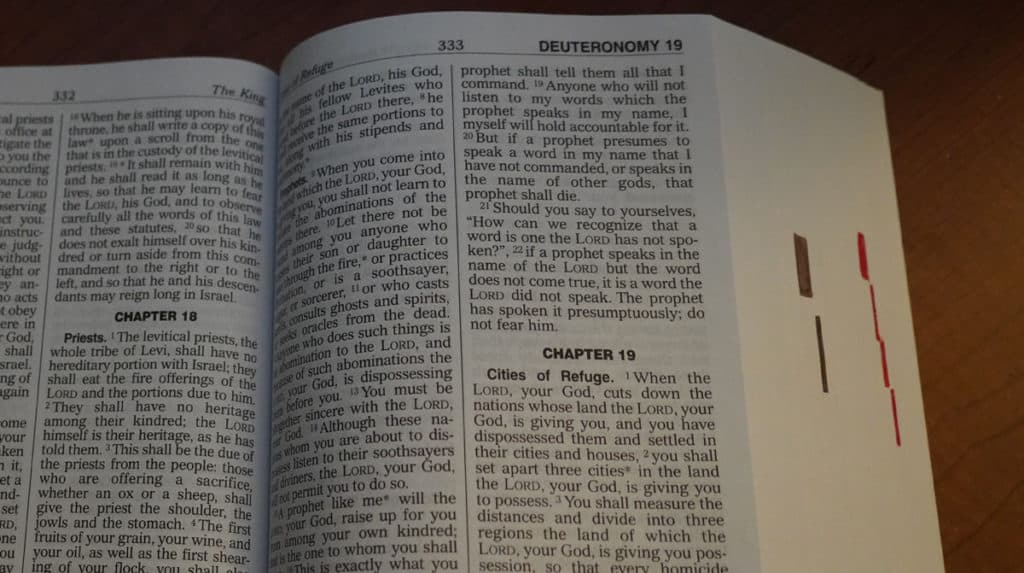
Lots of color-coding systems
I really can’t give much advice on the colors you can choose. There are a lot of opinions about that and it is up to you. I chose Red for the Gospels because some Bibles mark Jesus’s words in Red. If I did 1,2 Samuel and 1,2 Kings I might do them in Purple for Kingly royalty, but you could also do black for the Divided kingdom parts and exile to Babylon, so there isn’t a single choice for all. I’ll leave that to your imagination and choice to explore.
Once you start highlighting, you may make mistakes, may want to change colors or may want to use a different method. Remember once you add the ink, it is permanent. Some people like this aspect as it shows who they were at that moment. Others don’t, so if it is your first time highlighting, you may want to try with an extra inexpensive Bible first.
Sticky Notes
I use 1 or 2 sticky notes when I need to mark the beginning and end of a passage, but don’t want to mark up the Bible after that one usage. I also use this approach in books that are older. Someone else may use them after me.
Plain Old Paper
If I don’t want to get any marks or even sticky note glue on the page (for family heirlooms and old history books, I will use a regular piece of paper like a bookmark with my notes on the paper. That way the paper can be removed without any marks to the book.
Separate Notebook
If you like to write a lot of notes or diary-type thoughts while you read, you may want to invest in a notebook. The Bible does not have a lot of room for notes so this would allow you to write more. The Bible has Chapter and Verse notations so you can easily refer to a specific verse or range of verses in your notebook. Definitely recommended if you aren’t sure you want to mark-up your Bible but want to personalize your reading. Many people do this and come back years later to re-read their notes as reflection.
Color-Coded Bibles
If you do not want to do the coloring yourself but want something more than black and white, the Great Adventure Bible is one of our favorites. It has colored periods and books that follow a colored Timeline, with color maps, and Jesus’s words in red. It is a Catholic Bible but it has all the books that are in a Protestant Bible plus a few more for good reading. It is in color for those that don’t want to mark-up the Bible themselves. Here is a link to find it on Amazon. It is not inexpensive, but if you bought a Bible, maps, and timelines all independently they would add up to around the same price.
Read Your Bible
Whatever your personal taste, whether it be a black and white Bible or a colored version, or one that you mark-up yourself, the key is to try and improve your relationship with the Lord on a regular basis. If highlighting passages and writing notes helps you to do that, great!
When we meet God face to face, it won’t be about whether we used black & white or color in our Bibles, but what we learned from it to apply in our lives and the quality time we spent with Him and others.
Enjoy Reading!

